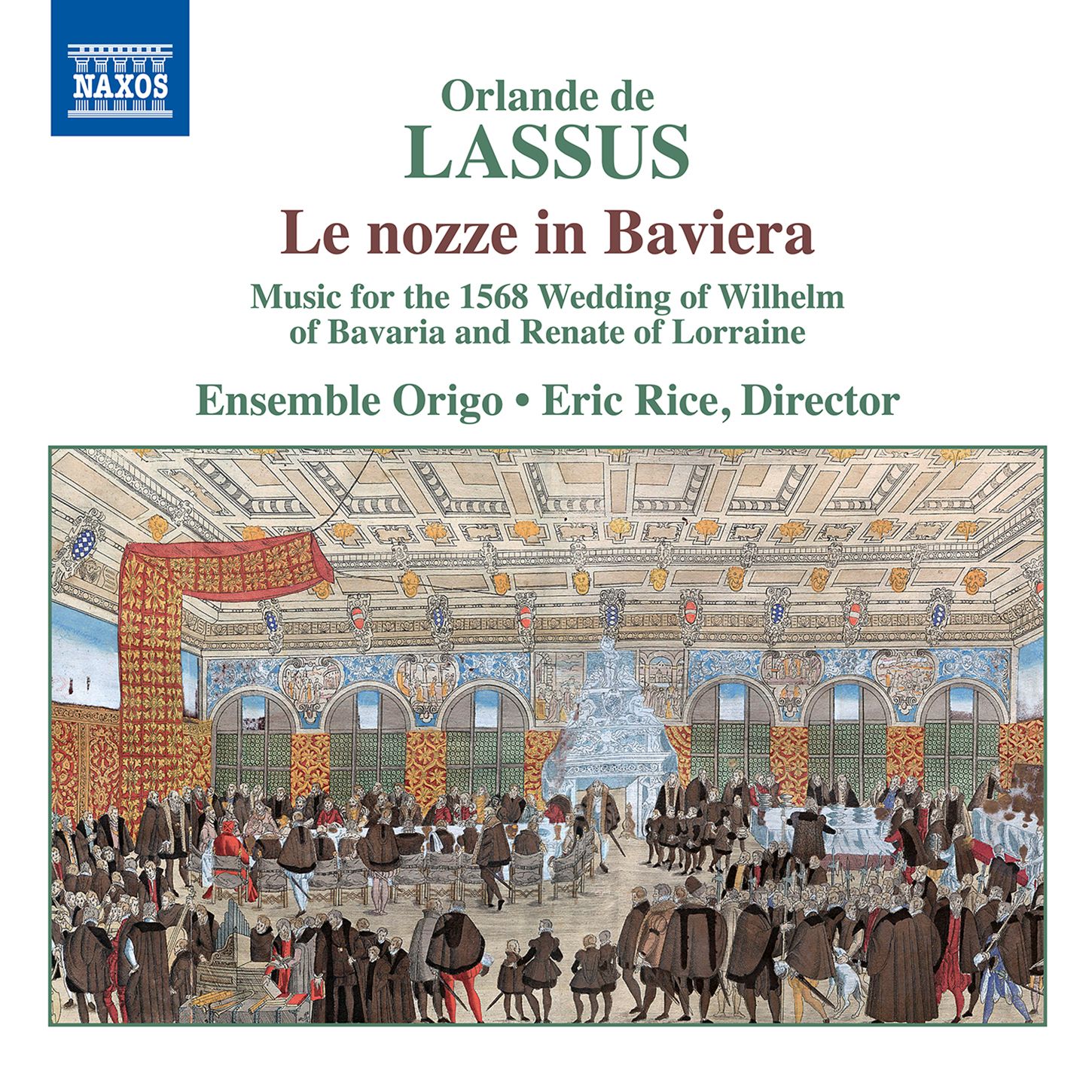Lassus' matrimonial marathon: Le nozze in Baviera
The disc's journey from religiosity to bawdiness is both involving and fascinating

Orlando de Lassus had been Maestro di Capella at the court of Duke Albrecht V of Bavaria since 1556. The 1568 wedding of Albrecht's son and heir, Wilhelm V to Renate of Lorraine called for a sumptuous celebration - one that was to last full 18 days, in fact!
In 1569, Massimo Troiano published a description of this matrimonial marathon. From this, musicologist and director of Ensemble Origo, Eric Rice, has posited a sequence of music, including episodes of "improvised comedy" which led Rice to the commedia dell'arte associations of Lassus' 1581 Libro de villanelle, moresche, et altri canzoni. The majority of the secular pieces on the disc come from that source.
The disc actually originated from Rice's curiosity about the morescha, an Italian form that caricatures Black Africans: Rice exhibits great self-awareness and honesty in his booklet commentary as he explains his viewpoint inevitably comes from a white, privileged standpoint. The 1581 book also includes examples of moresche.
And so it begins - with the conclusion of the wedding itself, in the form of Lassus' Te Deum laudamus. From there, we have the performance of a motet performed at a supper a week after the wedding, a "Saturday evening" performance some 13 days after the wedding of moresche; and music heard for an improvised commedia dell'arte event 15 days after. Here's that Te Deum; Rice adds instruments to the vocal score, convincingly:
That "supper motet" is Gratia sola Dei, a piece apparently so beautiful it stopped people in the very act of eating itself! Rice follows the description of the wedding performance in having four solo voices sing the second section before the remarkably explicit final verse. It is actually a piece of the utmost beauty, performed with real understanding by the Ensemble Origo:
The third track introduces the moresca, a form related to the villanella (a song that imitated the lyric Neapolitan street traditions that were popular in the 1530s). The name ''moresco refers to the speech of the "Moors" (Africans, but the word can also refer to anyone from teh Middle East or Africa).
Rice gives a long and fascinating outline on the arrival of theKanuri language in some of these texts (a language spoken today in Cameroon, Chad, Niger and Nigeria). Lassus was exposed to the earliest examples of the moresca in Naples; all but one of his own moresche were prunted in the 1581 Libro.
Hai, Lucia, bona cosa is a fascinating piece. Gender fluidity is at its best with the protagonist, Giorgio, specifically referr d to as "Georgia". A song about the freedom of "Genta negre" (The black people) - and Lucia in particular - and of a lover therefore claiming his beloved:
The bawdiness of some of the texts is certainly amusing: in this dialogue between "Giorgio" and "Lucia," Lucia's insults are certainly direct against poor old Geirgio, whose only crime seems to be loving her:
The Commedia dell'Arte performance (Monday, March 8, 1668) includes the one non-Lassus piece, a gentle lute song by Filippo Azzaiolo (fl. 1557-69) that is intended as a serenade from afar (think the operatic trope of the serenade that Rossini and Mozart amongst others made use of):
The disc's journey from religiosity to bawdiness is both involving and fascinating. A unique offering from Ensemble Origo; and one to which I will doubtless return on many occasions.
